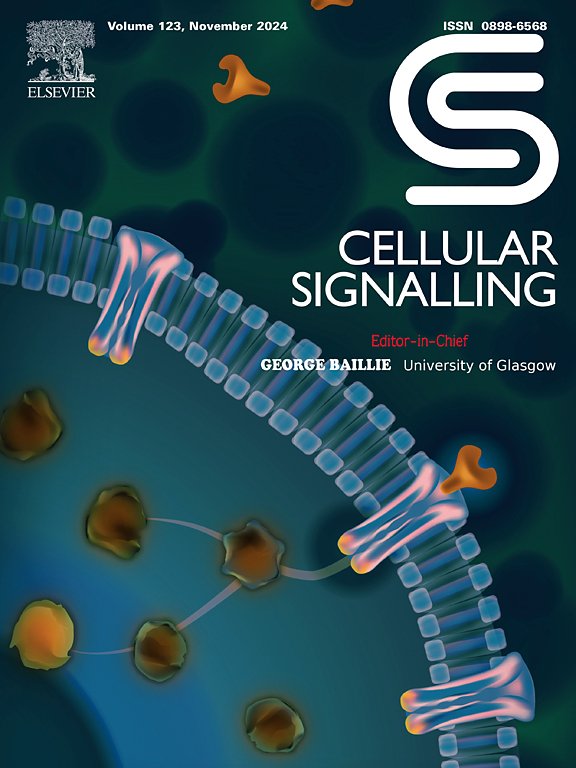细胞外组蛋白H3通过HDAC2激活和PKM2亚细胞再定位诱导急性肝衰竭的巨噬细胞炎症。
IF 3.7
2区 生物学
Q2 CELL BIOLOGY
引用次数: 0
摘要
急性肝衰竭(ALF)是一种危及生命的临床综合征,除肝移植外治疗选择有限。细胞外组蛋白作为损伤相关分子模式(DAMPs)从死亡或活化的细胞中释放出来,发挥浓度依赖性的细胞毒性,并可激活免疫细胞引发炎症反应。在本研究中,我们通过体内和体外模型研究了细胞外组蛋白H3对ALF过程中巨噬细胞功能的影响,并探讨了其潜在机制。细胞外组蛋白刺激显著增加小鼠的炎症水平。体外实验中,h3处理的巨噬细胞呈促炎表型,吞噬能力受损。此外,H3刺激可促进巨噬细胞PKM2的核易位,增强糖酵解活性,上调HDAC2的表达。药物抑制HDAC2部分抑制PKM2核定位和减轻巨噬细胞驱动的炎症反应。最后,分子对接和免疫荧光实验证实了HDAC2和PKM2之间的直接相互作用。总之,我们的研究结果表明,细胞外组蛋白H3通过调节HDAC2表达和PKM2亚细胞定位来驱动促炎巨噬细胞表型,从而加速ALF的进展。本文章由计算机程序翻译,如有差异,请以英文原文为准。

Extracellular histone H3 induces macrophage inflammation in acute liver failure via HDAC2 activation and PKM2 subcellular relocalization
Acute liver failure (ALF) is a life-threatening clinical syndrome with limited therapeutic options beyond liver transplantation. Extracellular histones, released from dying or activated cells as damage-associated molecular patterns (DAMPs), exert concentration-dependent cytotoxicity and can activate immune cells to trigger inflammatory responses. In the present study, we investigated the impact of extracellular histone H3 on macrophage function during ALF and explored the underlying mechanisms using both in vivo and in vitro models. Extracellular histones stimulation significantly increased inflammation levels in mice. In vitro, H3-treated macrophages adopted a proinflammatory phenotype and exhibited impaired phagocytic capacity. Moreover, H3 stimulation promoted nuclear translocation of PKM2, enhanced glycolytic activity, and upregulated HDAC2 expression in macrophages. Pharmacological inhibition of HDAC2 partially suppressed PKM2 nuclear localization and attenuated macrophage-driven inflammatory responses. Finally, molecular docking and immunofluorescence assays confirmed a direct interaction between HDAC2 and PKM2. Collectively, our findings demonstrate that extracellular histone H3 drives a proinflammatory macrophage phenotype by modulating HDAC2 expression and PKM2 subcellular localization, thereby accelerating the progression of ALF.
求助全文
通过发布文献求助,成功后即可免费获取论文全文。
去求助
来源期刊

Cellular signalling
生物-细胞生物学
CiteScore
8.40
自引率
0.00%
发文量
250
审稿时长
27 days
期刊介绍:
Cellular Signalling publishes original research describing fundamental and clinical findings on the mechanisms, actions and structural components of cellular signalling systems in vitro and in vivo.
Cellular Signalling aims at full length research papers defining signalling systems ranging from microorganisms to cells, tissues and higher organisms.
 求助内容:
求助内容: 应助结果提醒方式:
应助结果提醒方式:


